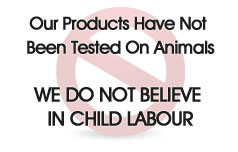 Email :
Email :
enquiry@dehlvi.com
![]() Toll free :
Toll free :
011-42141431
Search for Dealer locator or Dehlvi Approved clinics
 Email :
Email :
enquiry@dehlvi.com
![]() Toll free :
Toll free :
011-42141431
Search for Dealer locator or Dehlvi Approved clinics

Search for Diseases :
Description
Iron deficiency anemia is a frequent complication of advanced liver disease. Chronic liver disease (CLD) of any cause is frequently associated with hematological abnormalities. Among these, anqemia is a frequent occurrence, seen in about 75% of patients with advanced liver disease.
Persons most commonly affected: Women and young children are most commonly affected.
Symptoms and indications: The symptoms of moderate to severe iron deficiency anemia include:
General fatigue, weakness, pale skin
shortness of breath, dizziness, strange cravings to eat items that aren’t food, such as dirt, ice, or clay, a tingling or crawling feeling in the legs, tongue swelling or soreness, cold hands and feet, fast or irregular heartbeat
brittle nails, and headaches.
Causes and risk factors: Bleeding in the gastrointestinal tract is the most common cause of iron deficiency anaemia in men, as well as women who've experienced the menopause (when monthly periods stop). Inability to absorb iron and endometriosis are other causes.
Anemia is a common condition and can occur in both men and women of any age and from any ethnic group. Some people may be at greater risk of iron deficiency anemia than others, including:
Women of childbearing age, pregnant women, people with poor diets, people who donate blood frequently, infants and children, especially those born prematurely or experiencing a growth spurt and vegetarians who don’t replace meat with another iron-rich food.
Prevention: Diets that include the following foods can help treat or prevent iron deficiency:
Red meat, dark green, leafy vegetables, dried fruits, nuts and iron-fortified cereals. Additionally, vitamin C helps your body absorb iron. If you’re taking iron tablets, a doctor might suggest taking the tablets along with a source of vitamin C, such as a glass of orange juice or citrus fruit.